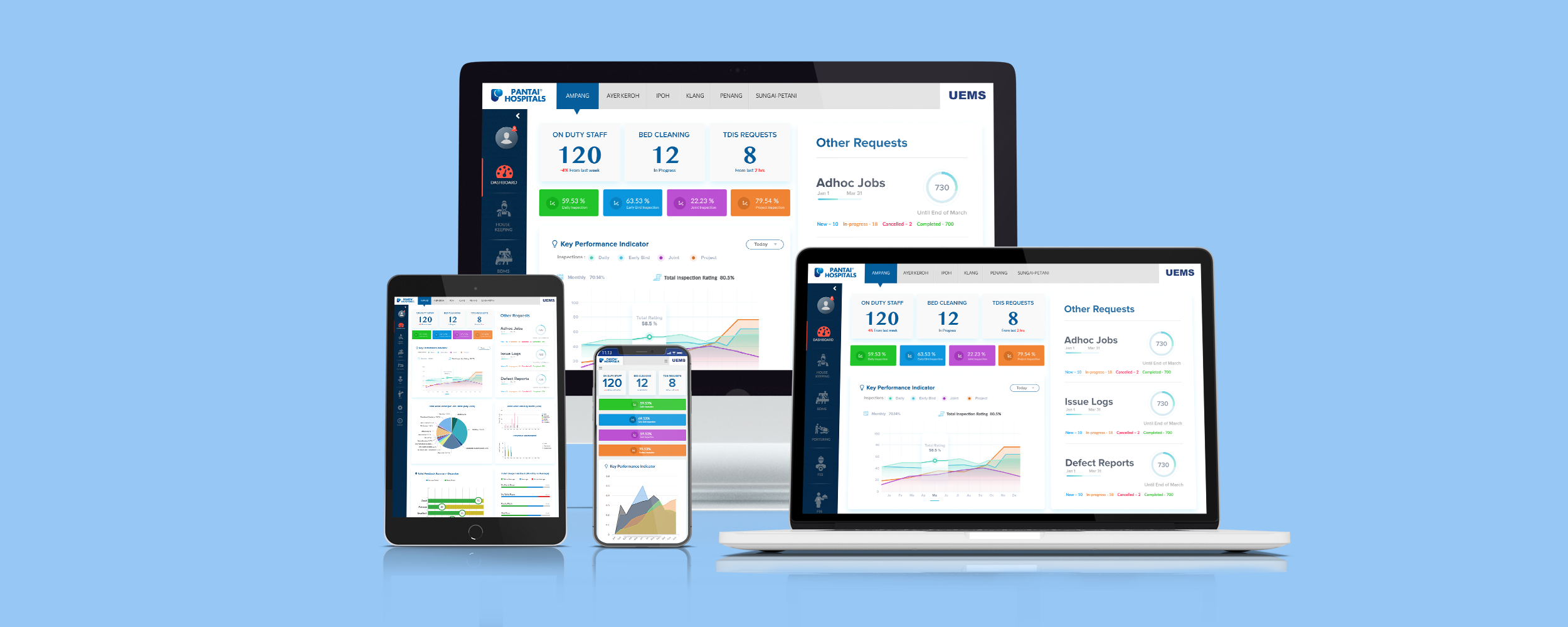Pantai Hospitals – Facility Management Dashboard
Transforming healthcare operations across 5 major hospitals in Malaysia through intelligent dashboard design, reducing administrative overhead by 40% and improving patient care delivery.
Transforming healthcare operations across 5 major hospitals in Malaysia through intelligent dashboard design, reducing administrative overhead by 40% and improving patient care delivery.

This dashboard was built to help facility teams in Pantai Hospitals monitor real-time operations — including maintenance, cleanliness, toilet feedback, and staffing levels.
Pantai Hospitals' facility management teams were struggling with fragmented systems across their 5 major facilities. Facility Managers, Housekeeping Supervisors and Maintenance Technicians operated with different tools, creating operational inefficiencies and delayed response times.
By deeply engaging with users through interviews and contextual research, I uncovered patterns that guided key design decisions—ensuring the experience met both user needs and business outcomes.
We conducted comprehensive research over 6 weeks to understand user needs, current workflows, and technical constraints across all hospital locations.
Sarah Chen, 15+ years experience
Maria Rodriguez, 8 years experience
David Kim, 12 years experience
Created specialized interfaces for each user type, with Facility Managers getting comprehensive oversight tools, Supervisors receiving team coordination features, and Technicians accessing streamlined mobile workflows for field operations.
A comprehensive command center that consolidates data from all hospital systems into a single, intuitive interface. Features real-time patient flow monitoring, bed occupancy tracking, staff allocation optimization, and emergency response coordination.
Faster Response
Average maintenance response time reduced from 4.5hrs to 1.6hrs
Annual Cost Savings
Operational cost reduction through improved efficiency
Productivity Gain
Technician productivity increase through optimized workflows
Compliance Rate
Preventive maintenance schedule adherence
Valuable insights gained throughout the project that can be applied to future healthcare technology initiatives and complex enterprise design challenges.